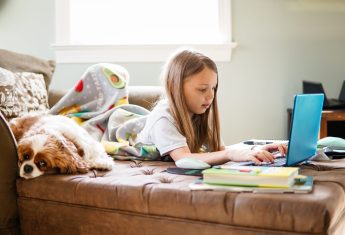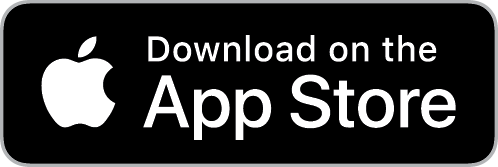Primary 6 - Second Level Literacy
Online Literacy Lessons for Primary 6 Students in Scotland.
Primary Six Grammar lessons start with nouns, adjectives, verbs and adverbs.
Pupils learn to understand and apply knowledge of language forms and features. They learn to use expanded noun phrases to add more detail by adding an adjective. They learn to modify the verb, enhancing their writing. They learn to create sentences of their own using nouns, adjectives, verbs and adverbs.
Our Direct Speech lessons show to understand how speech marks - inverted commas - are used effectively when punctuating direct speech. They learn to identify direct speech. They learn to break up sentences and create a new paragraph if a new speaker has spoken. They will be able to explain where speech marks belong in a range of sentences and use reported clauses effectively.
In our Enhancing Vocabulary lesson pupils learn to clarify the meaning of new vocabulary in context. They learn to use context clues to define the meaning of unfamiliar words, improving their vocabulary. They learn to use a dictionary to define challenging sords and make connections with new words using synonyms and antonyms.
Primary Six homophone lessons explain how to investigate, recognise and spell words in homophone sets. Pupils learn that some words sound the same but have different spellings and meanings. They learn to select and spell 'their', 'there' or 'they're' accurately depending on the meaning of the word in context.
Our Auxiliary Verbs lesson teaches how to define how auxiliary verbs change the meaning of the main verb. Pupils learn to identify some common auxiliary verbs, explain how to use the correct verb form and observe and identify proper tense rules.
We explore fronted adverbials, identifying the features of fronted adverbial phrases. Pupils learn how to identify and explain the different types of fronted adverbials and create a variety of fronted adverbial sentences.
We teach how to identify and effectively include quantifiers in writing. Pupils learn to differentiate between countable an uncountable nouns and apply the correct quantifier to sentences using each grammar rule.
Pupils learn to punctuate effectively and explain the use of exclamation and question marks. They learn to use exclamation marks at the end of a statement to show strong emotion. They learn to punctuate interjections using exclamation marks and punctuate a direct question using a question mark.
Our comparative and superlative adverbs lesson defines those adverbs, teaching pupils to identify and use comparative and superlative adverbs to make comparisons. They learn to recognise adverbs as action words and to compare one verb action with another using comparative adverbs. They learn that superlative adverbs compare three or more actions and be learn the most common irregular comparative and superlative adverbs.
Pupils learn to develop their knowledge and understanding of the literary techniques of ellipsis and rhetorical questions. They learn how to use ellipsis to omit words from text for dramatic effect. They learn to use rhetorical questions to draw in the reader and to persuade and influence the reader.
We teach the four types of sentence: statement, command, exclamation and question. Pupils learn to explain and define each sentence type, identify them in context and punctuate each question type accurately.
Our lessons identify, create and explain the literary effect of similes and metaphors in writing. Pupils learn to identify and interpret the meanings of similes and metaphors in context. They learn to create imaginative similes and metaphors and to differentiate between them.
Figurative language lessons start with personification - defining personification and identifying and using it in writing. They learn to identify and interpret the meanings of personification in context and create examples, matching human characteristics with a noun.
We introduce hyperbole as a form of exaggeration to emphasise a point. Pupils learn to identify and interpret the meaning of hyperbole in story writing and to create sentences which include hyperbole.
Our figurative language lessons continue with onomatopoeia and alliteration, defining both and teaching pupils to identify, explore and create examples in their writing.
We introduce collective nouns, explaining how to define and demonstrate their use. Pupils learn to explain what a collective noun is, to match collective nouns with their singular partners and demonstrate their use in a sentence.
Students learn to up-level their writing by including features of VCOP - vocabulary, connectives, openers and punctuation. They learn to include descriptive vocabulary by including ambitious word choice in their writing. They learn to use co-ordinating and subordinating connectives to improve the flow of their writing and to include effective sentence openers to engage the reader.
We show them how to create an imaginative piece of writing. They learn to create a vocabulary generator to brainstorm ideas. They learn to structure their writing effectively using an introduction, main body and conclusion. They learn to combine short sentences, ellipsis and fronted adverbials to add tension and suspense in their narrative.
Pupils learn how to structure a structured letter, referencing a checklist to ensure they have included all the features of a formal letter. They learn how to use appropriate tone and language in writing both formally and informally. Pupils can explain why they would write or receive a formal letter.
In our writing lessons we use specific text features to make predictions before, during and after reading fiction and non-fiction texts. Pupils learn to make predictions using evidence from the text. They learn to make predictions using text features such as illustrations and narrative.
They recognise that predictions are used to suggest what may happen next, how events may unfold or how a character may develop.
Students learn to make connections with themselves, texts and the wider world. They learn to connect what they are reading to other ideas they have read in other text. They learn to connect what they are reading to their own experiences and connect what they are reading to the wider world.
Our lessons teach how to visualise characters, description and events in text. Students can visualise as they read to understand what the writer is trying to communicate. They learn to verbalise the main points from a visualiser, recording the findings as a short summary.
Self-questioning strategies teach our pupils to think more deeply. This allows them to interact with the text and reflect on their understandings. They learn to create questions in their minds before, during and after reading a text. They learn to predict the answers to questions they have created.
Students learn to make inferences by combining evidence in the text to inform understanding. They learn to go beyond the literal meaning of a text and form ideas by reading between the lines. They learn to use clues from illustrations and use prior knowledge and experiences to make connections.
Summarising and paraphrasing teaches our pupils to write a short, concise summary using key information from the text. Pupils learn to understand the process of paraphrasing recording their responses in their own words. They learn to identify the main points in a text. They learn to shorten a piece of text, reiterating the main parts and put a text into their own words.
Pupils learn to show their understanding of what they have read by responding effectively to literal, inferential and evaluative question types. They can recall facts from the text when answering literal questions. They learn to use textual clues - or evidence - and prior knowledge to answer inferential questions. They learn to read beyond the text and evaluate what they believe in relation to the author's message.


"It's bright and colourful, easy to read, and extremely easy to use unlike most textbooks or online learning websites" Daisy, S3 PupilSign Up & Learn Today

